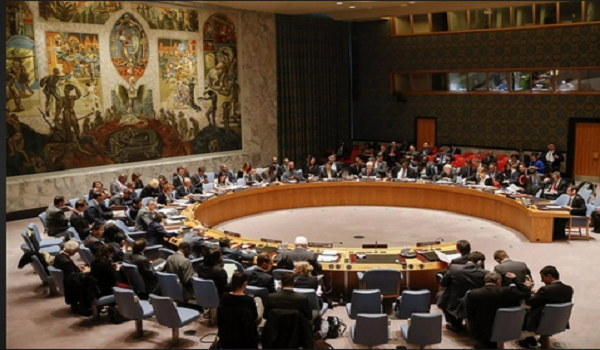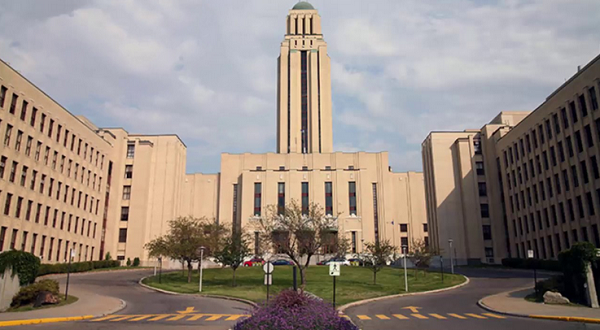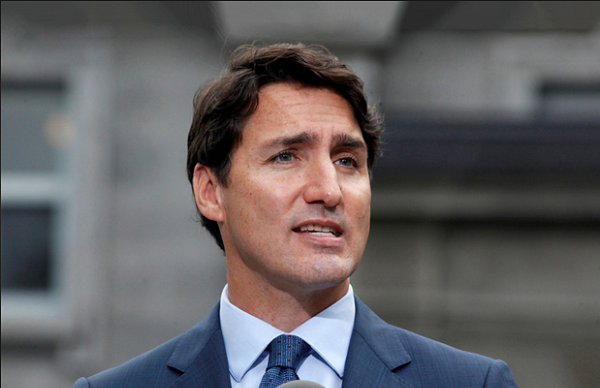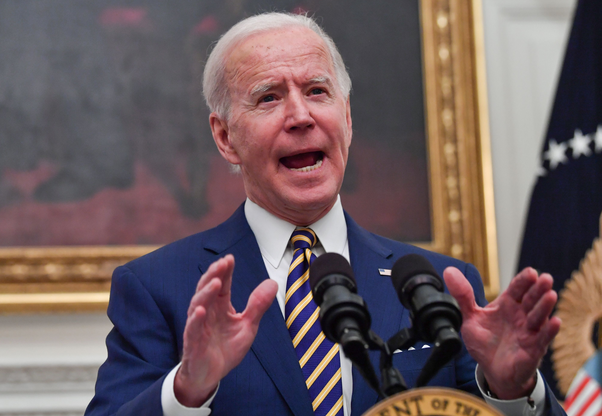UN Security Council unable to pass resolution calling for immediate ceasefire in Gaza
The United Nations Security Council on Friday failed to pass a resolution calling for an immediate ceasefire in Gaza as part of a hostage deal after Russia and China vetoed the measure proposed by the United States.
The resolution, which Guyana also abstained from voting for, called for an immediate and sustained ceasefire lasting roughly six weeks that would protect civilians and allow for the delivery of humanitarian assistance.
It marked a further toughening of Washington’s stance toward Israel. Earlier in the five-month-long war, the U.S. was averse to the word ceasefire and vetoed measures that included calls for an immediate ceasefire.
“The vast majority of this council voted in favour of this resolution, but unfortunately Russia and China decided to exercise its veto,” U.S. Ambassador to the United Nations Linda Thomas-Greenfield told the Security Council.
Before the vote, she said it would be a “historic mistake” for the council not to adopt the resolution.
Russia’s ambassador to the UN, Vassily Nebenzia, also speaking before the vote, called on members not to vote in favour of the resolution.
He said the resolution was “exceedingly politicized” and contained an effective green light for Israel to mount a military operation in Rafah, a city on the southern tip of the Gaza Strip where more than half of its 2.3 million residents have been sheltering in makeshift tents to escape the Israeli assault farther north.
“This would free the hands of Israel and it would result in all of Gaza and its entire population having to face destruction, devastation, or expulsion,” Nebenzia told the meeting.
He said a number of non-permanent members of the Security Council had drafted an alternative resolution, which he called a balanced document, and said there was no reason for members not to support it.
China’s ambassador to the UN said Beijing also supported the alternative resolution.
But Thomas-Greenfield said that measure fell short.
“In its current form, that text fails to support sensitive diplomacy in the region. Worse … it could actually give Hamas an excuse to walk away from the deal on the table,” she said.
U.S. Secretary of State Antony Blinken said on Thursday he believed talks in Qatar, which are focused on a six-week truce and the release of 40 Israeli hostages and hundreds of jailed Palestinians, could still forge an agreement.
The U.S. resolution had backed talks brokered by the U.S., Egypt and Qatar over a ceasefire.
A diplomat said a resolution drafted by the 10 elected members of the Security Council under Mozambique’s coordination could be brought forward for a vote as soon as Friday afternoon.
The draft resolution, obtained by Reuters, demands an immediate ceasefire for the Muslim holy month of Ramadan, the release of all hostages and emphasizes the need to expand the flow of humanitarian assistance to Gaza.
China’s ambassador to the UN said the text proposed by the U.S. was unbalanced and criticized it for not clearly stating its opposition to any military operation by Israel in Rafah, which he said could lead to severe consequences.
“The U.S. draft … sets up preconditions for a ceasefire, which is no different from giving a green light to continued killings, which is unacceptable,” the ambassador, Zhang Jun, said after the vote.
He said if the U.S. was serious about a ceasefire, it would not have vetoed multiple previous Security Council resolutions.
During the war, Washington has vetoed three draft resolutions, two of which would have demanded an immediate ceasefire. The U.S. had justified its veto by saying such council action could jeopardize ceasefire talks.
The U.S. has wanted any Security Council support for a ceasefire to be linked to the release of hostages held by Hamas in Gaza. Hamas attacked Israel on Oct. 7, killing 1,200 people and taking 253 hostages, according to Israeli tallies.
Israel’s offensive has killed almost 32,000 Palestinians, according to health authorities in Hamas-ruled Gaza.
The U.S. traditionally shields Israel at the U.N. But it has also abstained twice, allowing the council to adopt resolutions on increasing aid and calling for extended pauses in fighting.
Blinken met Israeli Prime Minister Benjamin Netanyahu on Friday for talks aimed at ensuring more aid flows into Gaza, amid increasingly tense relations between the two allies over the six-month-old war.
In Gaza, Israel claimed to have killed or captured hundreds of Hamas fighters in a five-day operation at the Al Shifa hospital complex, one of the only medical facilities even partially functioning in the north. Hamas and medical staff deny fighters were present there.
Blinken, on his sixth trip to the Middle East since the war broke out on Oct. 7, has been engaged in an intense round of diplomacy since arriving in the region on Wednesday, meeting Crown Prince Mohammed bin Salman in Saudi Arabia and foreign ministers and officials from Arab nations in Cairo on Thursday.
Parallel meetings are also taking place in Doha on Friday aimed at securing a ceasefire in the conflict.
The top U.S. diplomat’s latest visit to Israel comes at a time of strained ties between the two countries, with U.S. President Joe Biden calling Israel’s campaign in Gaza “over the top” and saying it has had too great a toll on civilian lives.
Prior to the meeting with Netanyahu, which lasted about 40 minutes, Blinken said he would address the growing gap between the two countries in his one-on-one conversation. He also met with the Israeli war cabinet.
Blinken said he would push Netanyahu to take urgent steps to allow more aid into the densely-populated enclave, where mass death from famine is imminent, according to the United Nations.
The war was triggered by a raid into southern Israel by Hamas fighters who killed 1,200 and took 253 hostages, by Israeli tallies. More than 32,000 Palestinians have been killed in the subsequent Israeli bombardments, with many more feared dead under the rubble, Gaza health authorities say.
U.S. officials say the number of aid deliveries via land needs to increase fast and that aid needs to be sustained over a long period. Israel says it is not restricting aid.
“A hundred per cent of the population of Gaza is experiencing severe levels of acute food insecurity. We cannot, we must not allow that to continue,” Blinken told a news conference late on Thursday.
Israeli Colonel Moshe Tetro, head of Israel’s Coordination and Liasion Administration for Gaza, said the military does not believe there is a food shortage in the enclave.
“As much as we know, by our analysis, there is no starvation in Gaza. There is a sufficient amount of food entering Gaza every day,” he told reporters.
Blinken is also expected to discuss Israel’s intention to launch a ground offensive on Rafah, a city on the southern edge of the enclave where more than half of Gaza’s population is now sheltering in makeshift accommodation.
Washington has repeatedly objected to such a plan. Netanyahu told Biden in a phone call on Monday that Israel sees no other way to defeat Hamas fighters it says are holed up there.
Eight people were killed on Friday in an air strike on a house in Al-Naser, east of Rafah. Video images showed crowds of mourners around white shrouded corpses, while a red rag doll lay in the rubble of a crushed house.
The dead included a father, a mother and five of their children, said mourner Turkiah Barbakh.
“They are all children; they haven’t resisted or done anything. What happened to them is unjust,” she said. “How much longer do we have to endure this?”
Last week, the leader of Biden’s Democratic Party in the U.S. Senate called Netanyahu an obstacle to peace and said Israelis should vote him out. Biden called it a “good speech”; Netanyahu called it “inappropriate” and later held a video conference with lawmakers from Biden’s Republican opposition.
The discussion on Friday will likely lay the groundwork for meetings in Washington between senior Israeli and U.S. officials next week, when the United States will present to the Israelis alternative ways to hunt down Hamas without resorting to a full-on assault that would endanger more civilian lives.
Talks in Qatar on a truce are focused on a proposal for a six-week halt to fighting during which some 40 Israeli hostages being held by Hamas would be released, in exchange for hundreds of Palestinians in Israeli jails.
However, Israel is only prepared to commit to a temporary pause to the conflict and has repeatedly said it will push on with its campaign to achieve its aim of eradicating Hamas, which controls Gaza. Hamas wants a permanent end to the war and for Israeli troops to withdraw.
Blinken on Thursday said the gaps were narrowing.
In Gaza, fighting has been concentrated in recent days on the Al Shifa hospital complex, which is also sheltering hundreds of people displaced from their homes.
Israeli troops entered the facility on Monday and have been combing through the sprawling complex, which they say is connected to a tunnel network used by Hamas.
Israel said it had killed hundreds of fighters and detained more than 500 suspects in its operation on Al Shifa, including 358 members of Hamas and Islamic Jihad. It said three senior Islamic Jihad military commanders and two Hamas officials responsible for operations in the occupied West Bank were detained, as well as other Hamas internal security officials.
“Those who did not surrender to our forces fought against our forces and were eliminated,” Israel’s Rear Admiral Daniel Hagari told a briefing late on Thursday.
Hamas denies its fighters were in the compound and says those killed there were civilians and those rounded up include medical staff.
Israel issued pictures of faces of hundreds of men it said were fighters captured in the hospital, then later acknowledged that some were not captives. Ismail Al-Thawabta, director of the Hamas-run government media office, said the release of the photos reflected Israel’s “crisis and failure”.
This article was first reported by Reuters












